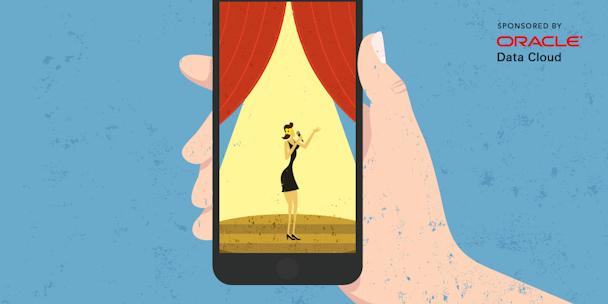The role of data in digital audio advertising
Digital audio is experiencing a revolution akin to the rise of “over-the-top” (OTT) streaming for video content consumption. Technology advancements and consumer demand have led streaming audio networks for both music and podcasts to level up the quality and availability of their content as audiences continue to flock to these channels. Unsurprisingly, this makes for a fertile engagement ground for advertisers.

Embarking on the digital audio journey through advertising.
The number of UK digital audio listeners sits at roughly 36.6 million today, and is expected to penetrate 56.6% of the population by 2023. The audio medium is viewed as a new frontier as those from all corners of the digital advertising industry clamour to figure out whether or not audio media buys are a proper fit for their businesses, how to optimise them, and where data-driven advertising fits among its ecosystem.
As far as its place in the digital advertising environment as a whole, digital audio falls pretty squarely into two models: “walled garden” platforms and open web. An overall upside to advertising over these channels, regardless of their model, is that ad blockers don’t work on digital audio platforms whether they are open web or platform based. Though ad blockers may be unnecessary here.
Unlike social media platforms, but similar to OTT channels, consumers seem to understand the transactional bargain: if you want to enjoy this service advertisement for free, you must pay a subscription fee. This removes some friction from the interaction amongst the provider, the advertiser, and the consumer in a way that traditional display has been unable to achieve.
As with all new advertising models, there are equal opportunities and challenges especially where the use of data is concerned. Where it relates to platforms, the quality and availability of data remains a challenge and an opportunity.
There is an availability of both first and third party data to advertisers through digital audio channels. Many platforms offer some measure of categories for first party algorithmic and IP address data, such as location, time of day, language etc., as well as highly accurate device data. By design, most digital audio streaming is done over mobile in application environments. Comparatively, 67% of podcast distribution is completed over smartphones vs. 14% laptop or desktop.
Most established streaming audio platforms have the ability to connect their technologies to third party data providers and pull in interest and behavioural data to increase the likelihood of reaching relevant audiences for the advertiser.
Also, as a bonus, studies show that where it relates especially to podcasts, half of podcast listeners in the UK are under 35. Advertisers wishing to connect with audiences in that age bracket already have self-selected simply by selecting the medium.
Where it relates to the use of contextual intelligence to reach audiences, digital audio platforms are on a par or ahead of other areas within the digital ad industry. Music streaming platforms have evolved to look at the contextual categories by music genre, playlist creation, and trending content as a way to contextually engage with users. Podcast networks offer such a wide range of content types that advertisers can decide whether or not a show is contextually a fit for them by topic.
For example, a listener of a baking podcast is an inherently better audience fit for an offer on related products, such as baking supplies, than a listener to a show similar to “Car Talk.” There are ways to test and learn if shows are a contextual fit for advertisers though the measurement of digital audio engagements is definitely a growth area.
The consumption model of audio itself presents a measurement challenge to the industry. In display advertising, however, there is always a bare minimum of engagement metrics (clicks, yet the validity of that metric is debatable) — audio engagement is utterly passive. In the absence of more meaningful metrics, some advertisers don’t have an appetite for it.
Whether or not the perception of audio as an “upper funnel” engagement tactic will change over time remains to be seen, but the first step in creating a viable measurement methodology is an agreed-upon standard of what “counts” as an impression. In 2018, the Media Ratings Council (MRC) published its guidelines on what constitutes an “Audible Ad Impression.” Audibility is to audio what viewability is to display. For an audio ad to count as an impression, the ad must be played through an audio player at above zero volume in a non-muted state for at least two seconds and be filtered for invalid traffic.
The groundwork is laid for better measurement in the digital audio sphere. And for data-driven advertisers, reliable measurement is (and should be) a must-have. If the technology can evolve even further, digital audio is signalling to the industry that we have captive audiences and can move the needle for your business.
Content created with:

Oracle Advertising and CX
Oracle Advertising helps marketers use data to capture consumer attention and drive results. Used by 199 of AdAge's 200 largest advertisers, our Audience, Context,...
Find out more